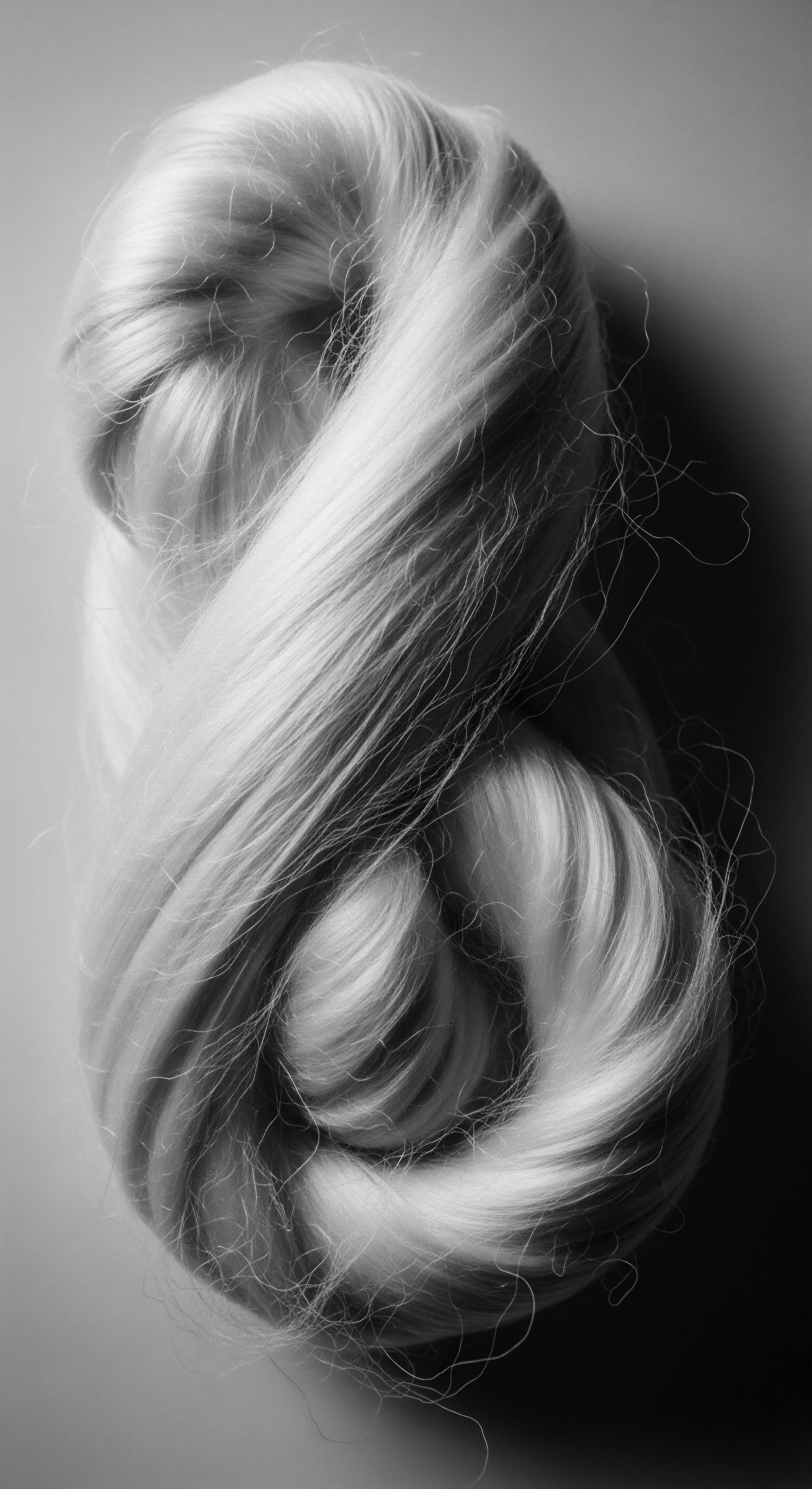
Fundamentals
The Coily Hair Structure, a profound expression of human biological diversity, represents a tightly wound helix, a marvel of natural design. Its explanation begins with a deep appreciation for the unique architecture of the hair strand itself. Unlike straight or wavy textures, coily hair is characterized by very tight, small, spring-like curls, often forming distinct Z-patterns or S-patterns from the scalp. This specific configuration gives coily hair its signature voluminous appearance, even when individual strands are fine.
This distinctive form is not merely a superficial characteristic; it is rooted in the very genesis of the hair within the scalp. The shape of the hair follicle, the tiny organ from which each strand grows, is the primary determinant of hair curl. For coily hair, the follicle is not straight or gently curved; instead, it possesses a highly curved, often asymmetrical, or even S-shaped configuration beneath the skin, with a retro-curvature at the bulb.
This means the hair grows out of the scalp at a sharp angle, rather than straight up, compelling the strand to coil upon itself as it emerges. This inherent curvature of the follicle shapes the growing hair shaft into its spiraling form.
The internal composition of a coily hair strand also plays a role in its definition. Hair is primarily composed of keratin proteins, arranged in a complex cellular structure. In coily hair, these keratin cells are distributed unevenly across the cross-section of the hair shaft. Imagine a strand cut in half ❉ its shape is typically elliptical or even flattened, rather than perfectly round.
This asymmetry in the distribution of keratinocytes, with more cells on one side of the strand than the other, contributes significantly to the hair’s tendency to curl and coil. This cellular arrangement, alongside the curved follicular pathway, dictates the remarkable spring and elasticity observed in coily textures.
The Coily Hair Structure, a biological marvel, finds its fundamental explanation in the deeply curved hair follicle and the asymmetrical arrangement of keratin within each strand.
Understanding the elemental biological aspects of coily hair lays a foundational stone for appreciating its profound cultural significance. For generations, this hair type has been a living archive, carrying stories of resilience, creativity, and identity across diasporic communities. Its physical attributes, such as its natural shrinkage and density, have necessitated particular care rituals and styling practices that have been passed down through familial lines, becoming threads in the rich fabric of shared heritage. The very appearance of coily hair, with its unique patterns and voluminous presence, has been a marker of belonging, a silent language understood across continents.
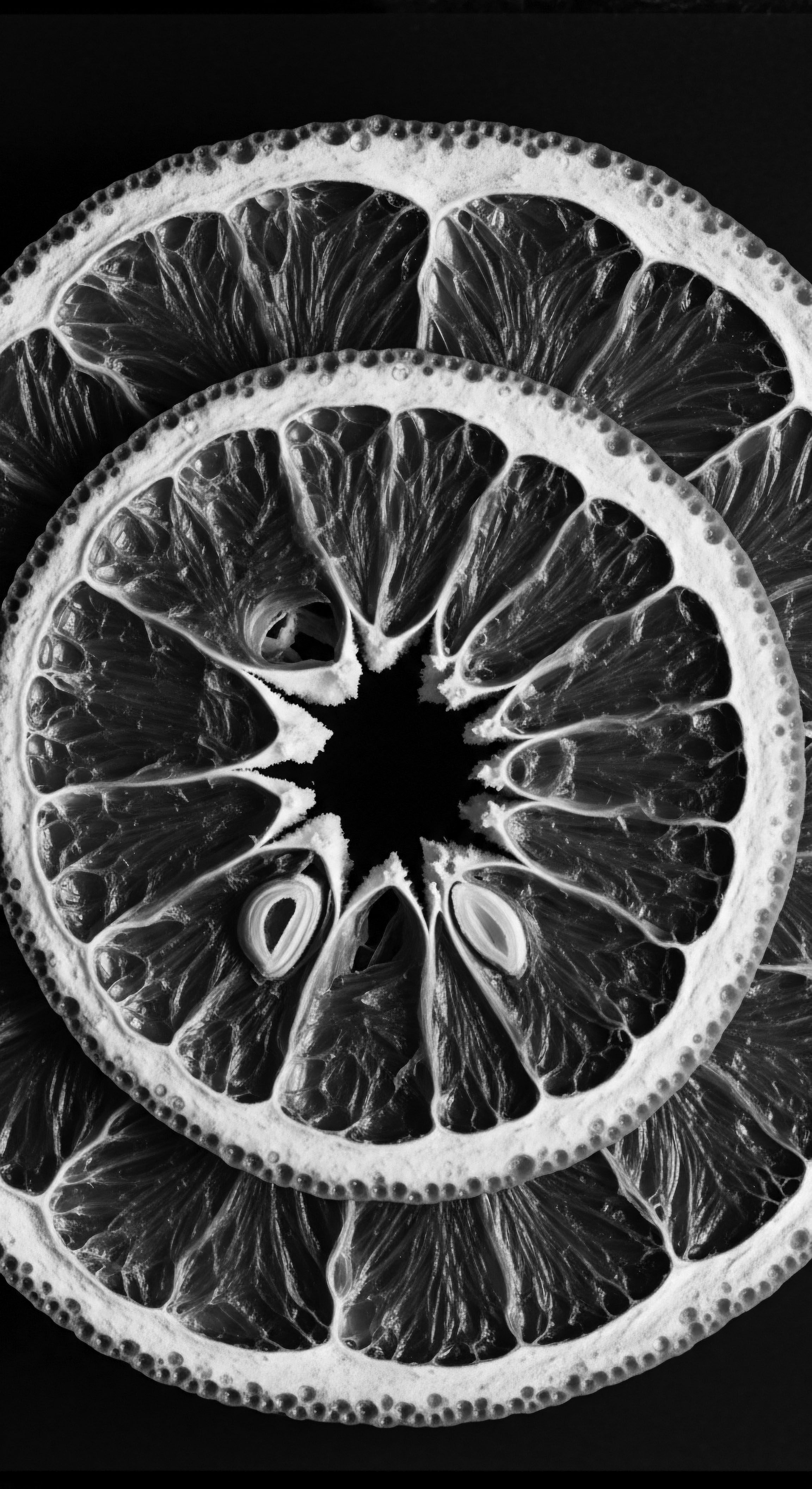
The Intrinsic Architecture of Coily Strands
To grasp the core of coily hair, one must look beyond its outward appearance and delve into its microscopic anatomy. Each strand is a testament to natural engineering, designed for specific functions that have served communities for millennia. The way the hair coils provides a natural protective layer against environmental elements, particularly intense sun exposure, a characteristic that hints at its ancestral origins in equatorial regions. This protective capacity is a biological legacy, etched into the very twist of each strand.
- Follicular Curvature ❉ The hair follicle, rather than being a straight tube, forms a pronounced curve, often resembling a golf club at its base. This curved pathway is the primary sculptor of the coily shape.
- Elliptical Cross-Section ❉ A slice through a coily hair strand reveals an oval or flattened shape, contrasting with the round cross-section of straight hair. This non-circular form contributes to the hair’s ability to coil tightly.
- Keratin Distribution ❉ The uneven distribution of keratin proteins within the hair shaft creates differential growth and tension, compelling the strand to bend and twist as it lengthens.
These anatomical specificities render coily hair distinct, demanding an approach to care that respects its unique requirements. The delicate nature of its tightly wound structure, for instance, means it can be more prone to dryness and breakage if not handled with reverence and specific moisture-retaining techniques. This knowledge, often shared orally through generations, forms a crucial part of the heritage of coily hair care.
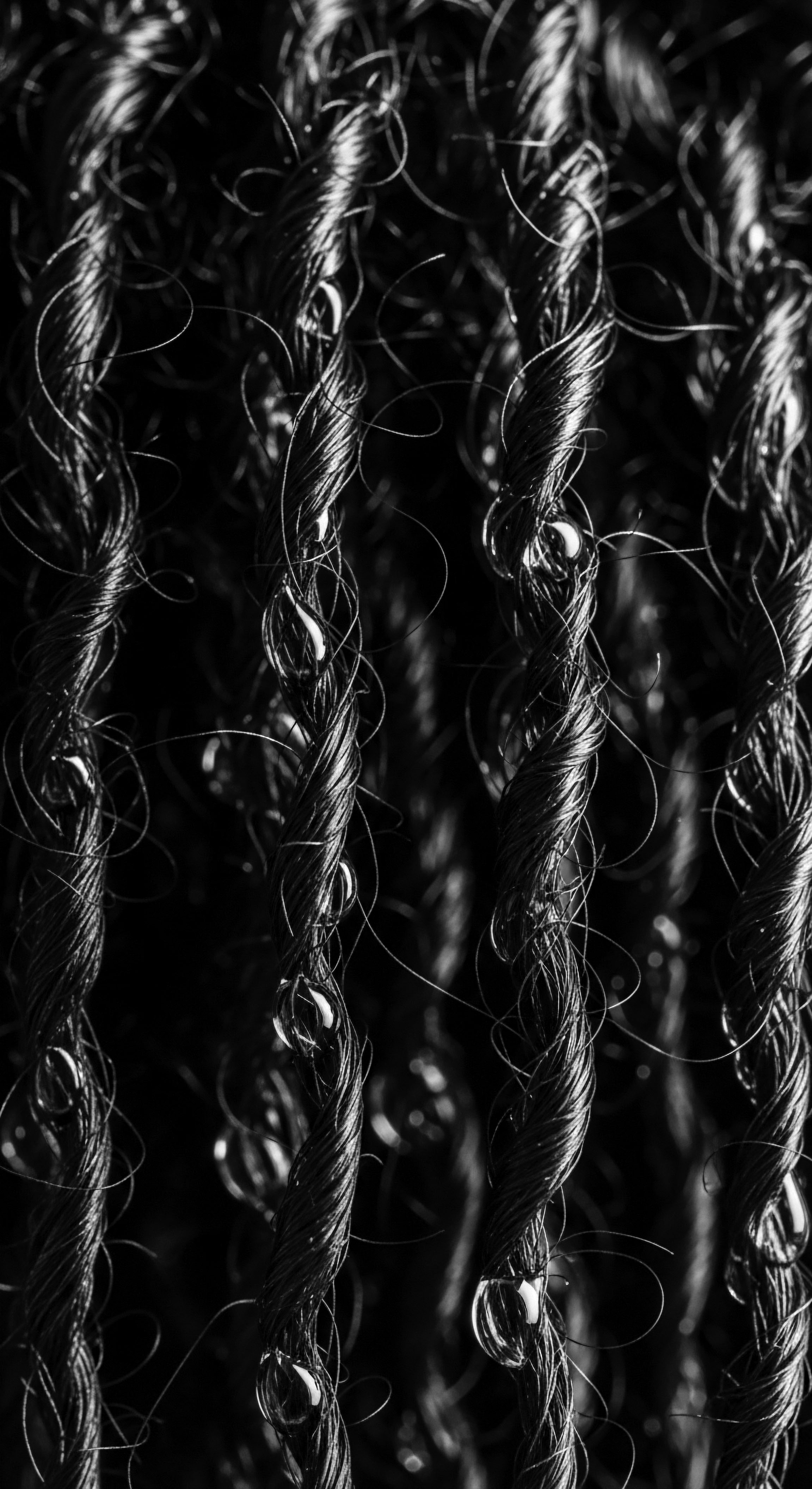
Intermediate
Moving beyond the foundational understanding, an intermediate explanation of Coily Hair Structure deepens our appreciation for its complex interplay of biology, environment, and ancestral practices. This hair type, often classified as Type 4 in various hair typing systems, encompasses a spectrum of textures from loose coils to incredibly tight, almost imperceptible Z-patterns, each with its own rhythm and personality. Its meaning extends beyond mere classification, serving as a dynamic testament to human diversity and the ingenuity of traditional care.
The physical characteristics of coily hair, such as its significant shrinkage, are direct consequences of its structural makeup. When wet, coily hair can appear much longer than its dry state, retracting considerably as it dries due to the elasticity and numerous bends along the strand. This phenomenon, while sometimes a point of frustration in contemporary styling, holds historical significance. It speaks to a hair type that, when properly cared for, can be remarkably resilient and versatile, capable of being manipulated into a myriad of styles that defy gravity and express profound cultural statements.
The vulnerability of coily hair, particularly to dryness and mechanical damage, is also a direct consequence of its structure. The tight coils mean that natural oils produced by the scalp, known as sebum, struggle to travel down the length of the hair shaft. This inherent dryness necessitates external moisture and specific sealing techniques, practices that have been central to ancestral hair care traditions for centuries. The knowledge of infusing moisture, protecting delicate ends, and detangling with patience is not merely a modern trend; it is a continuation of wisdom passed through familial lines, often through communal hair rituals.
The inherent elasticity and unique moisture dynamics of coily hair are not flaws, but rather distinctive characteristics that have shaped generations of care rituals and cultural expressions.
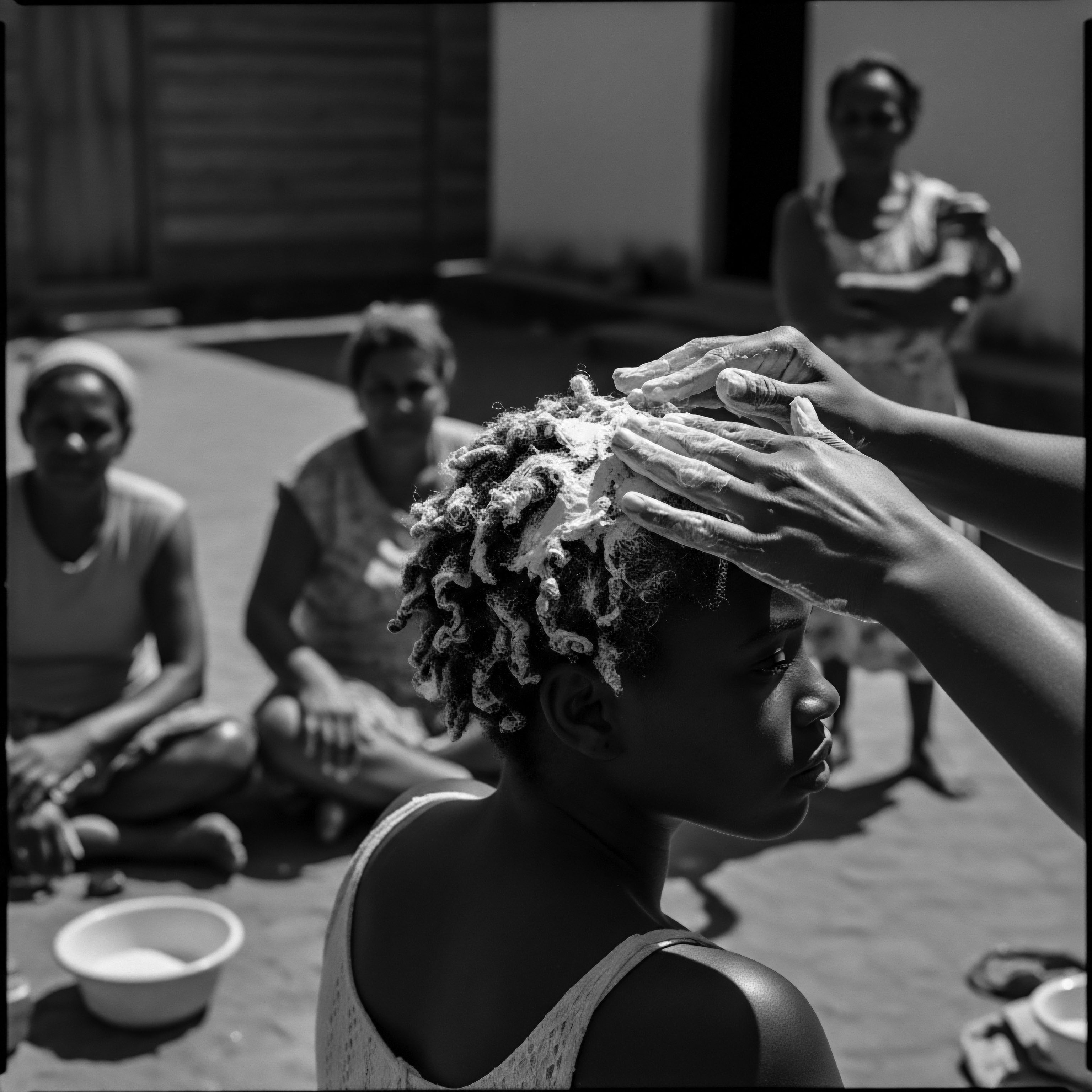
The Intergenerational Wisdom of Care
The care of coily hair, therefore, is not simply a routine; it is a ritual, a connection to a long lineage of individuals who understood its unique needs. Traditional practices, often passed from elder to youth, involved natural ingredients sourced from the earth and methods that prioritized gentle handling and deep hydration. These methods were not arbitrary; they were empirical responses to the specific structural demands of coily hair, refined over generations.
Consider the use of rich plant-based oils and butters in many African hair traditions. Shea butter, for instance, derived from the nuts of the shea tree, has been a staple across West Africa for centuries. Its emollient properties provide a protective barrier, sealing in moisture and softening the hair, directly addressing the inherent dryness of coily strands.
Similarly, various botanical infusions and clay treatments were employed to cleanse gently and condition deeply, respecting the hair’s natural balance. This deep ethnobotanical knowledge, woven into daily life, demonstrates an intimate understanding of the coily hair structure long before scientific terms were coined.
| Traditional Ingredient Shea Butter (Vitellaria paradoxa) |
| Ancestral Use Moisturizer, sealant, protective balm. |
| Structural Benefit for Coily Hair Seals in hydration, reduces friction, minimizes breakage on delicate coils. |
| Traditional Ingredient Coconut Oil (Cocos nucifera) |
| Ancestral Use Conditioning, shine, scalp health. |
| Structural Benefit for Coily Hair Penetrates hair shaft, reduces protein loss, provides lubrication for detangling. |
| Traditional Ingredient Chebe Powder (Croton Zambesicus) |
| Ancestral Use Hair strengthening, length retention (Chad). |
| Structural Benefit for Coily Hair Forms a protective coating, reduces breakage, aids in length preservation. |
| Traditional Ingredient Aloe Vera (Aloe barbadensis) |
| Ancestral Use Scalp soothing, conditioning. |
| Structural Benefit for Coily Hair Hydrates, provides slip for detangling, balances scalp environment. |
| Traditional Ingredient These traditional ingredients underscore a profound ancestral understanding of coily hair's needs, offering a legacy of care that continues to sustain and honor its natural beauty. |
The act of styling coily hair also became a social art, a communal experience that transcended mere aesthetics. Braiding sessions, for example, were often spaces for sharing stories, wisdom, and strengthening communal bonds. The intricate patterns of cornrows or the sculptural forms of updos were not just beautiful; they communicated social status, age, marital standing, and even tribal affiliation. This rich history of hair as a visual language is particularly pronounced in West African societies, where distinct braiding techniques held specific meanings within communities.
The resilience of these practices, even through periods of immense adversity, speaks volumes about the enduring connection between coily hair and identity. During the transatlantic slave trade, for instance, enslaved Africans used cornrows to create maps for escape or to hide seeds for planting, transforming a hairstyle into a covert tool of survival and resistance. This historical context provides a deeper meaning to the coils, acknowledging them not just as a biological feature, but as a symbol of defiance and enduring cultural memory.
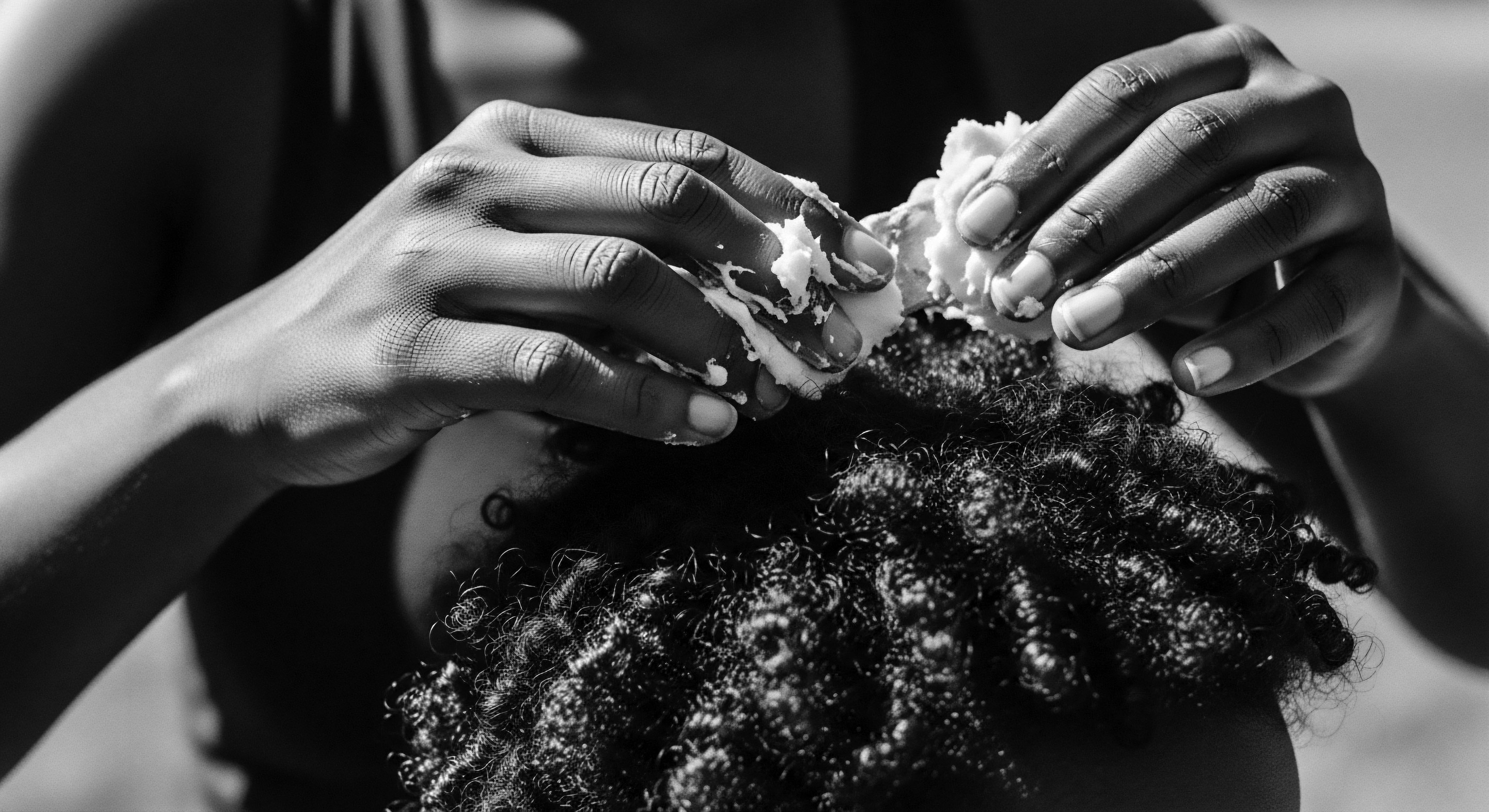
Academic
The Coily Hair Structure, from an academic vantage point, signifies a complex biological phenomenon deeply intertwined with human genetic diversity, adaptive evolution, and profound socio-cultural implications. Its meaning extends beyond a mere physical description, acting as a focal point for studies in genetics, anthropology, and cultural sociology. This highly specialized hair type, characterized by its remarkably tight, spring-like helical geometry, is predominantly observed in populations of African descent, representing a significant aspect of textured hair heritage.
At the cellular level, the genesis of coily hair is attributed to a highly asymmetrical hair follicle. Research indicates that the hair follicle responsible for coily strands exhibits a pronounced retro-curvature at the bulb, often likened to a golf club shape, and an angled dermal implantation. This architectural peculiarity dictates that the hair shaft, as it grows, is compelled to follow a convoluted, non-linear path, resulting in its characteristic coiling. Furthermore, the cross-sectional shape of a coily hair fiber is typically elliptical or flattened, rather than circular.
This flattened morphology, coupled with an uneven distribution of keratinocytes—the primary protein-producing cells—within the cortex, contributes to differential growth rates along the circumference of the strand, thereby reinforcing the helical pattern. The cortical cells, particularly types B and C, show a distinct bilateral arrangement, with more type C cells on the concave side and types A and B on the convex side, a clear correlation between curvature and bilaterality.
Genetic studies have begun to unravel the intricate molecular mechanisms governing coily hair formation. While hair shape is a polygenic trait, several genes have been identified as having a significant association with curl patterns. For example, genome-wide association studies (GWAS) involving individuals of African ancestry have linked polymorphic variations in genes such as KRT74 (Keratin 74), TCHH (Trichohyalin), and CUTC (a copper transporter protein) to the degree of hair curl. Trichohyalin, for instance, plays a crucial role in mechanically strengthening the inner root sheath of the hair follicle, influencing the organization of intermediate filaments and thus the final hair shape.
The Wnt signaling pathway, essential for hair cycling, has also been implicated, with mutations in Wnt10A leading to misformed hair. These genetic underpinnings underscore the deep biological roots of coily hair, reflecting millennia of evolutionary adaptation.
The academic definition of Coily Hair Structure is rooted in the asymmetrical morphology of its follicle and the differential distribution of keratinocytes, all governed by specific genetic markers shaped by adaptive evolution.
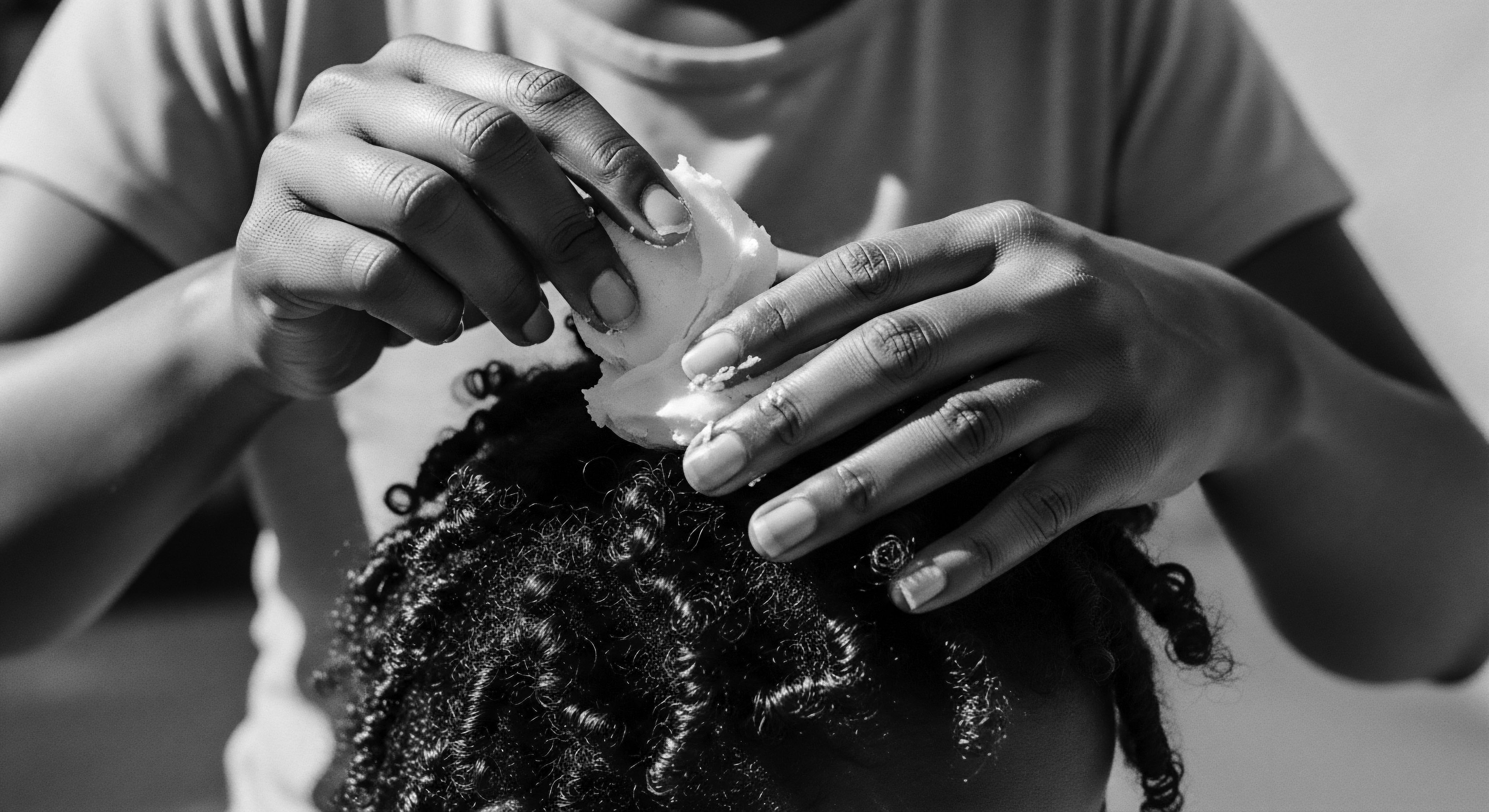
Adaptive Evolution and Cultural Resilience
The evolutionary significance of coily hair is a subject of ongoing anthropological discourse. A prominent hypothesis suggests that this hair texture provided an adaptive advantage to early human ancestors in equatorial regions by offering superior protection against intense ultraviolet (UV) radiation while simultaneously facilitating scalp cooling through its spiraled structure, which allows for greater air circulation. This perspective posits coily hair as an ancient, perhaps even the original, human hair type, highlighting its deep connection to human origins and migration patterns.
Beyond its biological adaptive qualities, the Coily Hair Structure holds immense cultural and social significance, particularly within Black and mixed-race communities. Historically, hair texture has been a powerful, often politicized, marker of identity, status, and resistance. In pre-colonial African societies, elaborate coily hairstyles served as visual narratives, communicating an individual’s age, marital status, social rank, tribal affiliation, and even spiritual beliefs. The very act of hair styling was a communal endeavor, fostering social cohesion and transmitting cultural knowledge across generations.
The enduring legacy of coily hair, however, has also been shaped by oppressive historical forces. During the transatlantic slave trade, the forced shearing of hair was a deliberate act of dehumanization, stripping enslaved Africans of a profound aspect of their identity and cultural ties. Yet, even in the face of such brutality, resilience prevailed. Enslaved people ingeniously utilized their coily hair in ways that defied their oppressors, such as braiding cornrows to conceal rice grains or to create maps for escape routes, a testament to the hair’s role as a silent, powerful instrument of survival.
(Byrd & Tharps, 2001). This historical example powerfully illuminates the Coily Hair Structure’s connection to textured hair heritage and ancestral practices of resistance.
The persistent societal biases against coily hair, often termed “texturism” or “hair discrimination,” have been extensively documented in contemporary sociological studies. These biases, rooted in Eurocentric beauty standards imposed during colonial eras, have historically led to internalized racial oppression and adverse psychological outcomes for individuals with coily textures. Research indicates that Black women, for example, are disproportionately labeled as unprofessional due to their hair presentation, with a study sponsored by Dove reporting that Black women are 3.4 times more likely to be deemed unprofessional because of their hair. This systemic discrimination underscores the continued relevance of understanding and celebrating coily hair as a symbol of identity, pride, and a challenge to hegemonic beauty norms.
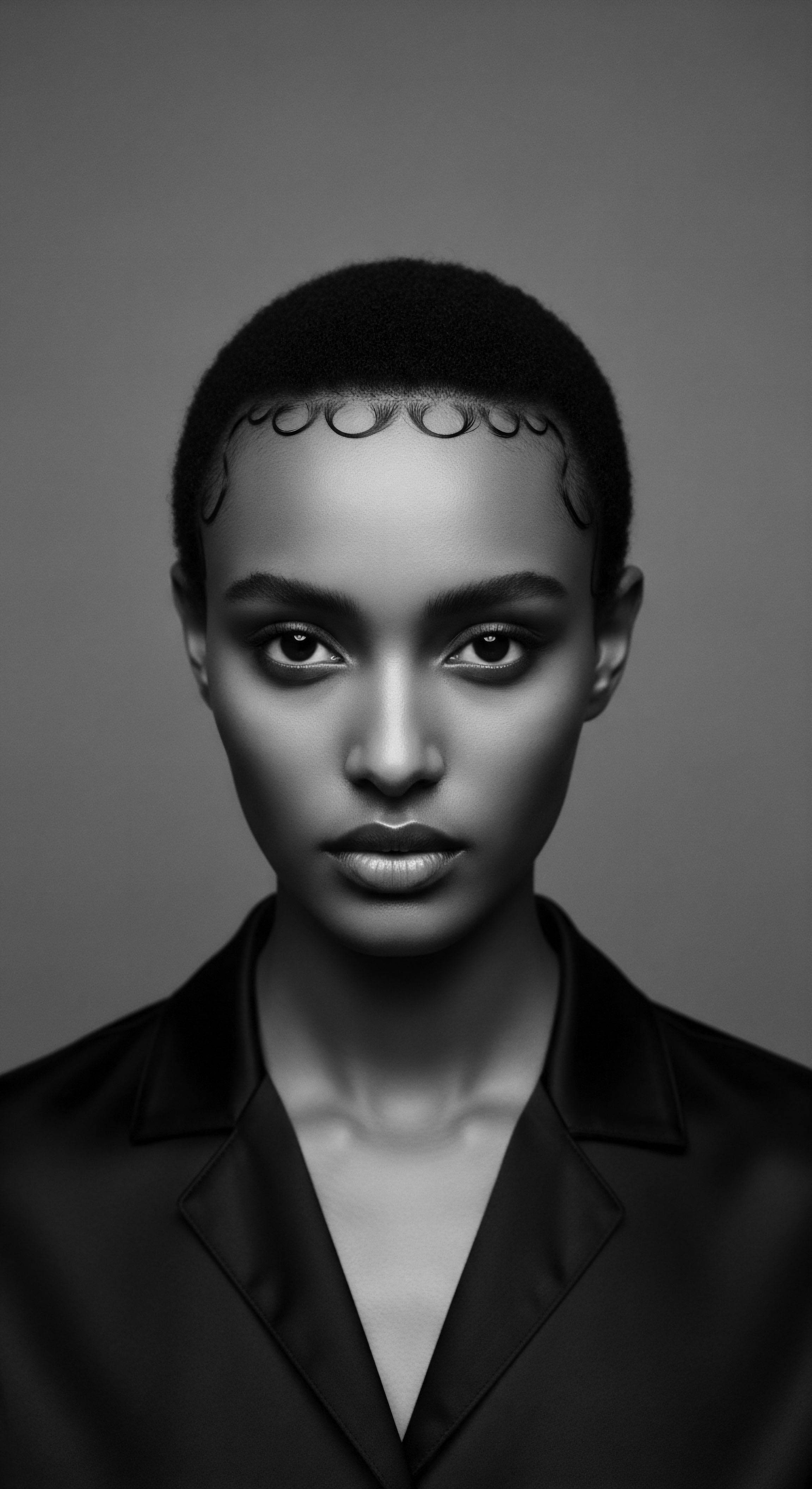
Contemporary Understandings and Global Dialogue
The modern natural hair movement represents a powerful reclamation of agency and a re-affirmation of the inherent beauty of coily hair. This movement, gaining significant momentum since the mid-20th century, particularly with the Black Power and “Black is Beautiful” movements, advocates for the acceptance and celebration of natural hair textures without chemical or heat alteration. It serves as a collective re-evaluation of beauty standards, promoting self-acceptance and a deeper connection to ancestral heritage.
Academic inquiry into coily hair also extends to its specific care requirements, moving beyond anecdotal evidence to scientific validation of traditional practices. The unique structural properties, such as its susceptibility to dryness due to the tortuous path sebum must travel, and its propensity for tangling and breakage due to numerous points of curvature, necessitate specialized care. This includes a focus on deep conditioning, gentle detangling, and protective styling, echoing the wisdom of ancestral methods that prioritized moisture retention and minimal manipulation.
The discourse surrounding coily hair continues to broaden, with scholars examining its intersectionality with gender, class, and global diasporic experiences. The ongoing efforts to legislate against hair discrimination, such as the CROWN Act in the United States, reflect a societal recognition of the deep-seated biases and the necessity of protecting the right to wear one’s natural hair. This collective push signifies a global re-calibration of what constitutes beauty and professionalism, with coily hair standing as a vibrant emblem of cultural richness and enduring human spirit.
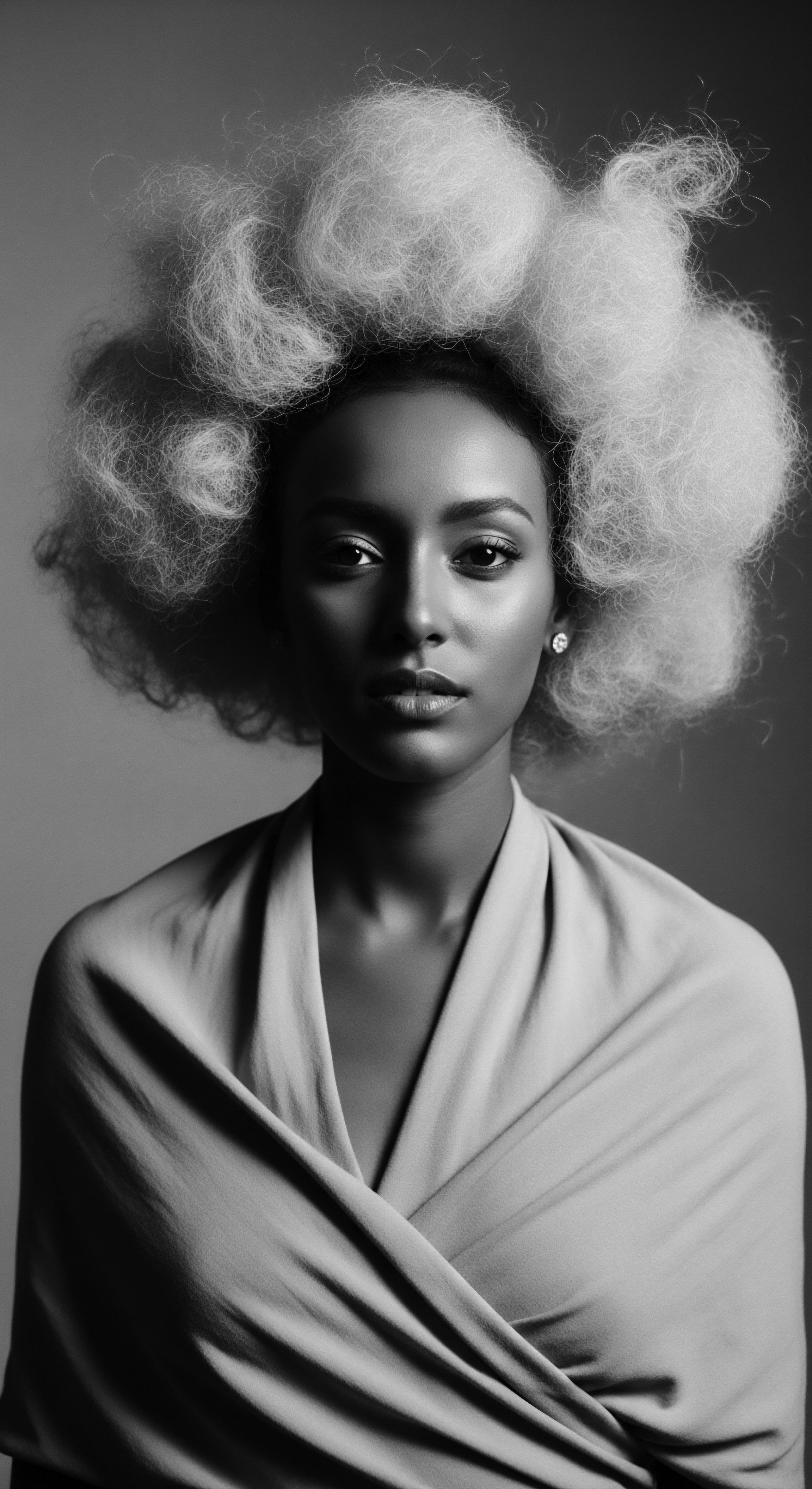
Reflection on the Heritage of Coily Hair Structure
The journey through the Coily Hair Structure, from its elemental biology to its profound cultural resonance, is more than an academic exercise; it is a meditation on the enduring spirit of textured hair heritage. Each coil, each tight bend, carries within it echoes from the source, a silent chronicle of adaptive brilliance and ancestral wisdom. We perceive not merely a physical attribute, but a living, breathing archive, pulsating with stories of resilience, beauty, and identity that span continents and centuries.
The “Soul of a Strand” ethos, which guides Roothea’s living library, finds its truest expression in the coily helix. It speaks to the tender thread of care passed down through generations, rituals steeped in natural elements and communal bonding that nourished not only the hair but also the spirit. The hands that braided, the oils that massaged, the songs that accompanied these acts—all were integral to the holistic wellbeing of the individual and the collective, forging unbreakable bonds with the past. This legacy of care is a gentle whisper, reminding us that true wellness is deeply rooted in honoring our origins.
As we look to the unbound helix, the future of coily hair unfolds as a continuation of this rich narrative. It is a future where the scientific understanding of its unique architecture validates the intuitive wisdom of our forebears, where cultural pride transcends imposed standards, and where every strand is celebrated as a testament to an unbroken lineage. The coils, once subjected to scrutiny and judgment, now stand as symbols of unapologetic self-acceptance, a vibrant declaration of heritage, and a guiding light for future generations to cherish their authentic selves. The story of coily hair is a testament to the enduring power of human spirit, constantly adapting, always beautiful, forever connected to its deep, meaningful past.
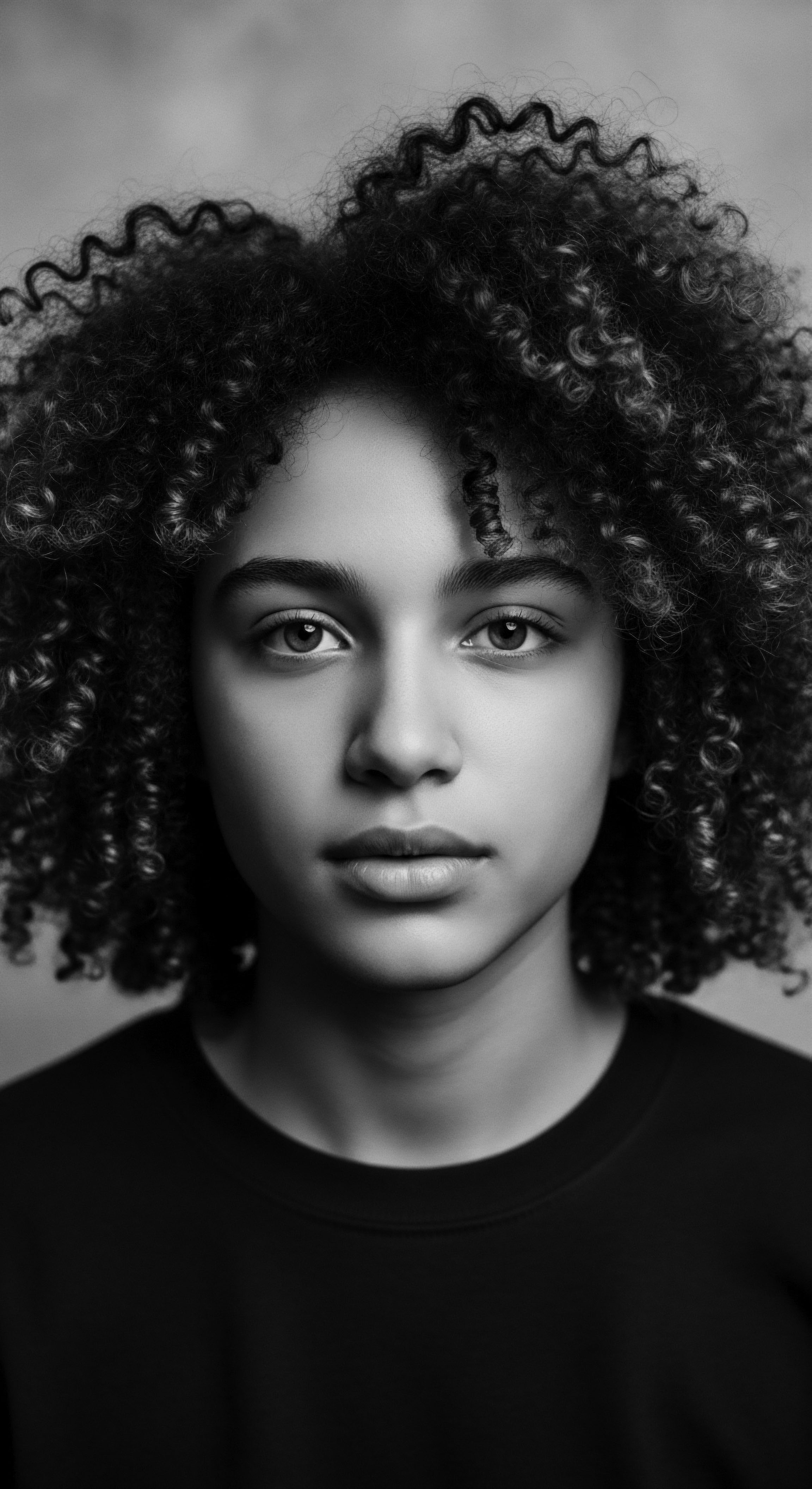
References
- Byrd, A. D. & Tharps, L. L. (2001). Hair Story ❉ Untangling the Roots of Black Hair in America. St. Martin’s Press.
- Dabiri, E. (2019). Twisted ❉ The Tangled History of Black Hair Culture. Harper Perennial.
- Ellington, T. N. (2020). Black Hair in a White World. Kent State University Press.
- Gillian, E. et al. (2019). The what, why and how of curly hair ❉ a review. Experimental Dermatology, 28(12), 1331-1342.
- Johnson, J. M. & Bankhead, T. (2014). Black hair and hair texture ❉ Cultivating diversity and inclusion for Black women in higher education. Journal of Leadership & Organizational Studies, 26(3), 389–401.
- Oforiwa, A. (2023). The History and Culture of African Natural Hair ❉ From Ancient Times to Modern Trends. AMAKA Studio .
- Pimentel, M. E. (2022). Racial Identity, Hair Esteem, Hair Texture, and Hairstyle Choice as Correlates of Psychological Well-Being among Afro-Latinas in the United States. Andrews University Dissertations.
- Sims, A. L. et al. (2020). Doing hair, doing race ❉ the influence of hairstyle on racial perception across the US. Journal of Applied Social Psychology, 50(9), 509-520.
- Tharps, L. L. (2014). Hair Story ❉ Untangling the Roots of Black Hair in America. St. Martin’s Press.
- Westgate, G. E. Ginger, R. S. & Green, M. R. (2017). The biology and genetics of curly hair. Experimental Dermatology, 26(5), 483-490.
- Westgate, G. E. et al. (2013). The genetics of curly hair. International Journal of Trichology, 5(2), 54-58.
